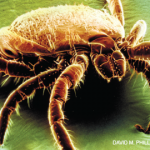Lyme disease has received a lot of press recently, so rheumatologists get a lot of pressure from patients to test for it. It is important that physicians only test when there are symptoms and exam findings suggestive of [Lyme disease].
—Kelly Rouster-Stevens, MD, MSc
Synergies with Adult List
The ACR adult and the pediatrics Top Five lists share some similarities. They both suggest against ordering ANA panels and testing for Lyme disease without evidence of disease from examination and history.
Dr. Rouster-Stevens doesn’t think that the overlap is surprising. “There are definitely differences in how you treat adults and kids,” she says. “But I think that many of the overarching themes of rheumatology are similar.”
The pediatric rheumatology Top Five recommendations are not to be viewed as a list of things physicians have to do, and it does not substitute for a rheumatologist’s experience and clinical judgment.
Although it was developed for rheumatologists under the auspices and direction of the ABIM Foundation’s Choosing Wisely campaign, the list is also geared as a way to communicate with other specialties.
“A big part of our effort is talking to physicians outside of rheumatology and giving them a sense of what we think are the important issues for all physicians to think about,” says Dr. Rouster-Stevens. “We hope to inform the practices of other specialties when there is an overlap.”
Kurt Ullman is a freelance writer based in Indiana.
Pediatric Rheumatology: Top Five Things Physicians and Patients Should Question
1. Don’t order autoantibody panels unless positive antinuclear antibody test (ANA) and evidence of rheumatic disease.
Up to 50% of children develop musculoskeletal pain. There is no evidence that autoantibody panel testing in the absence of history or physical exam evidence of a rheumatologic disease enhances the diagnosis of children with isolated musculoskeletal pain. Autoantibody panels are expensive; evidence has demonstrated cost reduction by limiting autoantibody panel testing. Thus, autoantibody panels should be ordered following confirmed ANA positivity or clinical suspicion that a rheumatologic disease is present in the child.
2. Don’t test for Lyme disease as a cause of musculoskeletal symptoms without an exposure history and appropriate exam findings.
The musculoskeletal manifestations of Lyme disease include brief attacks of arthralgia or intermittent or persistent episodes of arthritis in one or a few large joints at a time, especially the knee. Lyme testing in the absence of these features increases the likelihood of false positive results and may lead to unnecessary follow-up and therapy. Diffuse arthralgias, myalgias, or fibromyalgia alone are not criteria for musculoskeletal Lyme disease.




